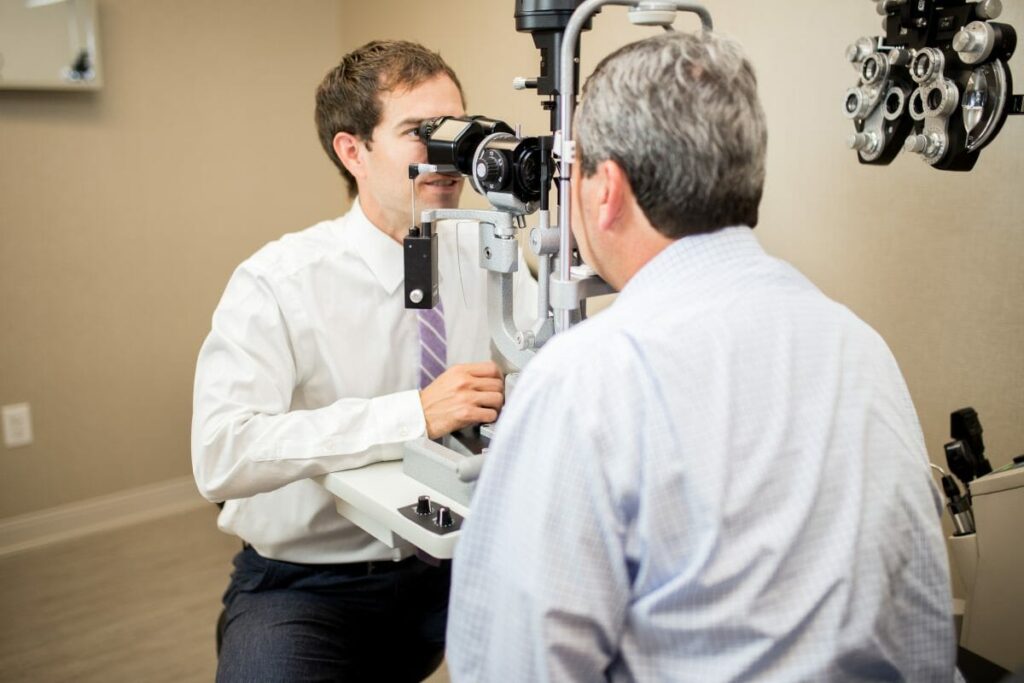With many of the health challenges we may face, there are physical symptoms to provide a warning of something being wrong. But there are also many that you may not know you have until it’s too late. Thanks to modern medicine though, we can detect more and more of these hidden diseases. Glaucoma is one of these conditions. Approximately 3 million people in the United States alone are living with glaucoma. Experts believe that there are an additional 3 million people who have glaucoma, and don’t know it.
To raise awareness for the ‘sneak thief of sight,’ January is Glaucoma Awareness Month. But what is glaucoma and what can we do about it? We’ve gathered some basics about this disease, as well as some things to know and what to do if you believe you are at risk for glaucoma.

WHAT IS GLAUCOMA?
Glaucoma is not just one disease but rather a collection of diseases that damages the optic nerve and leads to vision loss and even blindness. Glaucoma has earned itself the nickname “sneak thief of sight” due to the lack of symptoms until the permanent vision loss begins to set in. 40% of one’s vision can be lost, completely unnoticed.
WHO IS AT RISK?
People over 60 are most likely to be diagnosed with glaucoma, after experiencing significant vision loss. There are certain groups that have a high risk of having glaucoma; African Americans and Latinos over 40, everyone over 60, families with a history of glaucoma, and those living with diabetes. African Americans are six to eight times more likely to develop glaucoma than Caucasians. People with diabetes are two times more likely to develop glaucoma than those without diabetes.
HOW CAN GLAUCOMA BE PREVENTED?
While there is no known cure for glaucoma, there are a number of things one can do to prevent developing glaucoma. The best tool for preventing glaucoma is to get regular eye exams. If you know you are higher at risk for glaucoma, be sure to discuss these factors with your ophthalmologist.
WHAT ARE THE TREATMENT OPTIONS FOR GLAUCOMA?
When caught early, there are a few things you can do to manage vision loss. Maintaining a healthy weight, managing blood pressure, staying active and avoiding smoking will all help avoid vision loss from glaucoma and help prevent type 2 diabetes and other chronic conditions. Your doctor may also prescribe eye drops, oral medicine or recommend surgery, or any combination of treatments. Follow-up visits and following any instructions from your ophthalmologist can help prevent vision loss.
WHAT ARE THE DIFFERENT KINDS OF GLAUCOMA?
There are two major kinds of glaucoma, Primary Open-Angle Glaucoma (POAG) and Angle-Closure Glaucoma. POAG is the most common kind of glaucoma. This type of glaucoma is painless and causes no vision changes at first. POAG is caused gradually by the eye not draining fluid properly. This causes eye pressure and begins to damage the optic nerve. Preventative eye exams can catch early signs of optic nerve damage. Angle-Closure Glaucoma is less common but has a similar cause. The iris is very close to the drainage angle in the eye. When this drainage angle gets blocked completely, the eye pressure rises very quickly. This is called an acute attack. This attack is an emergency and should be addressed right away, as it can cause blindness. There are a few tale-tale signs that indicate an Angle-Closure Glaucoma attack; suddenly blurred vision, severe eye pain, headache, nausea, vomiting and rainbow-colored rings/halos around lights. Contact your ophthalmologist right away if you are experiencing these symptoms.
Glaucoma can be scary but can be prevented when caught early. Dr. Richard at Tanner Clinic’s Eye Center can help you spot any potential issues before you begin to lose your vision. Remember, if you are part of one of the high-risk groups from above, regular eye exams can help save your vision. It is also recommended that anyone over the age of 40 begins getting regular eye exams to identify any potential problems. While there is no cure, when caught early, total vision loss can be prevented. Make an appointment today, your eyes will thank you.

